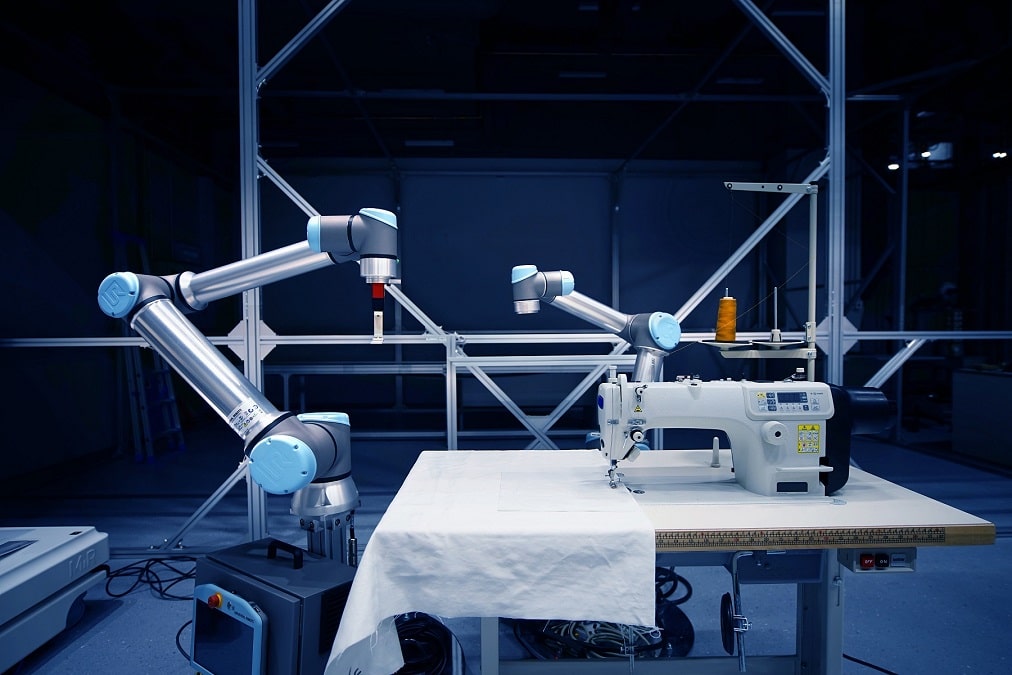Berlin Fashion Week Reboots Without Trade Fairs
BERLIN — With Germany still under lockdown, initial hopes for a hybrid Berlin Fashion Week with selected attendees quickly pivoted into the digital sphere. This season’s edition, running from Jan. 18 to 24, was an event that raised many questions: What’s the state of German fashion? How are the designers doing? With the trade shows gone to Frankfurt for a new fashion week, what’s the future of BFW?
The Senate of Berlin, not previously known for prioritizing creative industries, ponied up 3.5 million euros, distributed to half a dozen parties, and set the dates for the week in an attempt to help “position itself as the European capital of creative industries,” it touted in an official statement. And while often experimental, the myriad events — after last season’s hiatus — offered a survey of the city’s potential as a hub for emerging talents.
The first Berlin Fashion Week in the pandemic kicked off with the basics at the usual venue, Kraftwerk Berlin: Fashion Council Germany presented “The Status of German Fashion 2021,” a study conducted by the Oxford Business Group to assess the realities and possibilities of the local industry. The visual assessment came with the relaunch of Berliner Mode Salon, originally initiated by soon-departing Vogue Germany editor in chief Christiane Arp in 2015. The salon saw Heidi Klum’s daughter Leni Klum’s runway debut and featured a 360-degree virtual reality video of a well-curated group exhibition with 38 selected designers. Among the many participants of note were “Making the Cut”-laureate Esther Perbandt, with black avant-garde silhouettes; Michael Sontag, who presented historical natural dyeing techniques with plants sourced from his own garden; Rianna + Nina with colorful textile collages, and accessories designers Saskia Diez and PB 0110.
Berliner Mode Salon, Berlin Fashion Film Festival and Mercedes-Benz Fashion Week collaborated with each other and designers with a joint program and a range of different video formats. The streamed runway shows and short films included Tom Van Der Borght and Marc Cain, who will also show in Milan. MBFW also launched its Fashion Open Studio in collaboration with Fashion Revolution, showcasing select local designers and the finalists of the Hyères International Festival of Fashion and Photography. Der Berliner Mode Salon and Berlin Fashion Film Festival spotlighted the designers’ work in the face of the current challenges and future innovations through studio visits, conversations — including one with Valentino’s Pierpaolo Piccioli and filmmaker Luca Guadagnino — and launches, including the debut of men’s wear brand Per Se.
The second half of the week was dominated by niche formats. “202030 — The Berlin Fashion Summit” was launched as a platform to discuss matters on sustainable fashion by agencies Studio MM04, Squetch and the Beneficial Design Institute and brought together stakeholders from the fashion industry, politics, non-governmental organizations and cultural institutions.
Reference Festival by Reference Studios, previously billed as an independent multidisciplinary art and fashion festival, saw its second iteration as part of BFW. Reaching for the stars, the organizers staged the event at a planetarium and at their own studios, rebuilt as virtual spaces reminiscent of Nineties video games. Navigating through the not-yet-stellar digital venue through mouse clicks allowed one to reach the main stage featuring short, livestreamed performances by the likes of Anne Imhof and her partner Eliza Douglas, or dancer MJ Harper. Other parts of the virtual venue served as exhibition and sales rooms to present artworks and products like 032c’s image collage for its 20th anniversary and DJ Michel Gaubert’s “Blue Monday” remix. Berlin brand GmbH also streamed its show as part of the Paris Fashion Week official calendar and through Reference Festival simultaneously.
The highlight of the week was Highsnobiety’s “Berlin, Berlin,” which happened concurrently with the publisher and brand’s second edition of “Not in Paris.” There were photos by Jonas Lindstroem plastering walls and power boxes and advertising pillars all over the city, but also an augmented reality exhibition that allowed users to wrap a TV tower in artist Manuel Rossner’s bubbles and lines, or place Cibelle Cavalli Bastos dancers anywhere. There were daily live music streams from spaces like the Boros Bunker, but also behind-the-scenes of the life and work of fashion professionals like GmbH or Voo Store during the lockdown. “It was the first time we were invited. With the fairs gone, it was unclear what would happen to BFW, but it turned out to be a great opportunity to really be part of rethinking everything from scratch,” said Highsnobiety’s founder David Fischer.
Berlin Fashion Week historically overlapped with Paris Men’s Fashion Week because the trade fairs determined the dates. Going forward, it shouldn’t. Without the commercial focus of the fairs and significant public support, this edition was one to probe possibilities. With a better curated program — and more boldness in digital means — could Berlin Fashion Week finally tap its cultural potential to boost the fashion scene? “Now free to set dates not to overlap with other events, everyone can focus on Berlin,” Fischer said.







